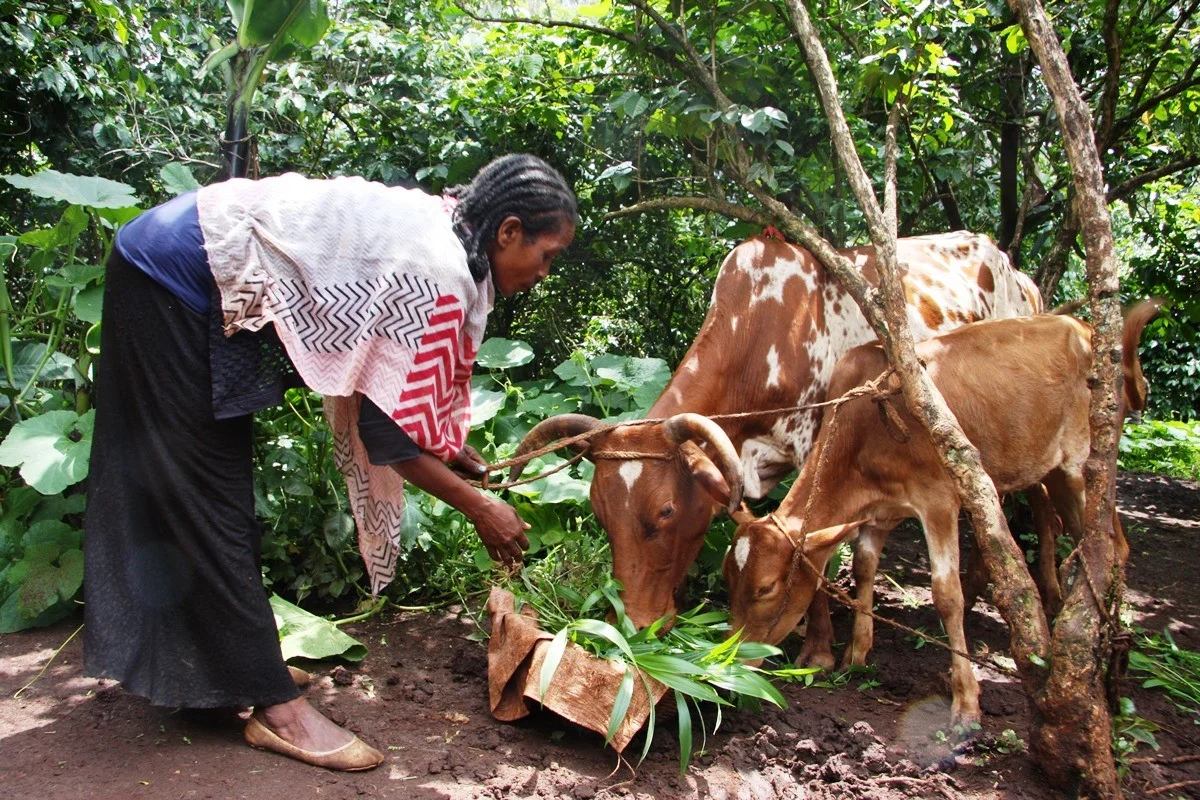Initial situation
In Gelana and Abaya, each woman has an average of five to six children. Every year the population grows by three percent. The farms are only 0.25 to a maximum of one hectare in size - that is not enough to feed the growing population. An average family therefore does not have enough food for half the year. Selling livestock is the main way to obtain cash to pay for clothing, school supplies and food. But due to climate changes, temperatures are increasing and with them food shortages and livestock diseases.
Children in particular often suffer from illnesses caused by contaminated water. This is a heavy economic burden: labor is limited and families have to spend what little they have on medication. There is a lack of self-help structures such as savings groups and cooperatives, which is why people, when they urgently need money, have to sell their agricultural products at inopportune times to middlemen who hoard them and after a while resell them at a large profit. In cases of acute need, farmers have to turn to private moneylenders - where interest rates of 100 percent are not unusual: indebted like this, development remains an unattainable dream for them. That's why young people in particular flee to the cities in the hope of a better life, where they end up in slums.

Our help for self-development
Concept with components
In a variety of ways, with our partner EWNRA, we want to meet the basic needs of around 63,000 people and improve their income so that they can live with dignity in their homeland. In total, there are five fundamental components in the integrated development project:
1. Promoting Agricultural Productivity:
One of the most important reasons for rural exodus is the shortage of food. People need food security all year round. The aim is to achieve greater productivity in small fields. EWNRA experts teach farmers modern and adapted farming methods and how they can diversify their production, for example with different types of vegetables. The seeds are given out as a kind of loan within cooperatives. After the harvest, farmers pay back the cost of the inputs to the cooperative.
2. Creating income opportunities for families:
Also as part of a loan, farmers receive calves and lambs from productive breeds of cattle that gain weight quickly. After fattening, they can sell the animals for a considerable profit. This is how we create assets that secure family existence.
3. Access to water and hygiene education:
In order to fight back water-borne diseases, people need hygiene lessons and, above all, safe drinking water. 26,600 people benefit from the construction of 75 water points and the renovation of 20 old facilities.
4. Restoration of Natural Resources:
In order for the country to remain viable, natural resources must be strengthened on the one hand and population growth must be slowed on the other. Men and women receive lessons in family planning, and in numerous training courses, the development experts from our partner organization instruct farmers on how to protect their soil from erosion and leaching. In order to protect the forest and reduce the immense felling of firewood for cooking fires, the distribution of wood-saving stoves is being promoted.
5. Merging of cooperatives:
What the social reformer Friedrich Wilhelm Raiffeisen recognized in Central Europe in the 19th century also applies to farmers in Ethiopia: If they join forces, they can more easily obtain agricultural inputs, market access and loans. That's why we support them in joining together in cooperatives - and thus bypass the middlemen and also become independent of the usurious interest rates of private moneylenders.
